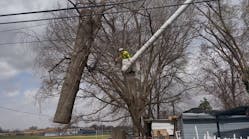All these factors will demand for a revamp of business processes and digitization of the complete value chain. A rapidly evolving green economy through renewables, Electric Vehicles (EV), storage and adoption of Distributed Energy Resources (DERs) will compel utilities to invest in re-imagining their value chain. At the same time, large oil and gas producers will expand their footprint in the adjacent renewables market and increase their commitments towards a zero-carbon economy. The transition from an oil-based economy to a green economy will happen through natural gas, and the year 2020 will see rapid changes imparted on the energy economy owing to this transition.
Rise of the Prosumer
The relationship between an energy supplier and the end consumer has always been stable with one supplying and the other consuming electricity. Their roles have never changed in the past. The modern energy supply landscape is no longer controlled only by the traditional suppliers. Consumers are turning into producers (prosumers), leveraging technologies that have made energy generation easy and self-serving.
Consumers are now actively considering fulfilling their individual energy demands from renewable energy sources. Availability of home solutions such as electric vehicle charging or counseling for energy efficiency is having ramifications on how energy is being generated, transported and supplied. Distributed energy, community microgrids and prosumers will see increased traction. Efficient energy distribution to homes with relevant and responsive communication layer managed through effective distribution management systems will become mainstream. Consumers have come to expect a digital, omni-channel experience for all of their interactions. Customer experience will depend heavily on how user centric systems are and the kind of tangible value they deliver and realize. These expectations could potentially mandate a thorough review and modernization of core IT systems that also meet the current industry needs for efficient, safe and nimble smart grid operations and an efficient mobile workforce.
We anticipate utilities to differentiate themselves by developing a digitally run end-to-end ecosystem. Utilities will accelerate their enterprise and legacy system transformations, reduce technical debt, derive valuable business insights through data analytics, enhance their customer experience as well as employee experience, disrupt and innovate using emerging technologies such as Artificial Intelligence, Machine Learning, Augmented Reality and Virtual Reality as well as ensure safety of equipment, grid security, cybersecurity while meeting all regulatory compliance needs.
Digital offerings for utilities will converge the four distinct vertically integrated solutions:
1. Digital Customer Service will be defined by customer experience modernization, replacement of legacy systems and migration of customer assets into the cloud coupled with rapid automation for superior customer experience. As “uberization” of energy continues to expand with solar, batteries and storage technology options, customers have more choice than ever before and hence being ‘off the grid’ is becoming a viable and increasingly popular option for them. Utilities should become relentlessly customer obsessed, by re-inventing customer experience and becoming an integral part of their lives.
Some of the reasons for poor customer experience are:
- Lack of digital channels and reliance on call centers and emails for customer engagement in the age of mobile, omni-channel, multi-sense and chatbots
- Poor first call resolution and long resolution times due to legacy processes e.g., overloaded call centers
- Lack of proactive customer engagement like energy usage dashboard, service requests, new products and services
Utilities should look at accelerating their enterprise and legacy system transformation journey to improve customer experience by:
- Replacing legacy customer information systems with proven and best-in-class customer service platforms for scalable and enhanced ease of use and performance
- Updating from server-based to cloud-based platforms to enhance accessibility
- Implementing customized tools for better customer service, higher automation, more reliability and security provisioning for personalized data
Some of the key emerging themes that utilities can consider for driving digitization across customer experience are:
- Customer onboarding: Process of onboarding a customer and updating account details
- Energy management: Monitoring and controlling consumption and optimizing expenses, including rebates
- Bill presentment and payment - Communication of bill details, reminders and modes of payment
- Outage/issue management: Communication of outages during incidents and natural calamities such as wildfires, registration of issues/outages, tracking and resolution
- Customer service: Customer service for resolution of concerns and queries in addition to pushing value added services
- Digital marketplace: Creation of a digital marketplace for purchase and sale of power
- Crowdsourcing outage maps and increased interaction on social media channels
2. Digital grid and assets will mandate smart grid automation, Distributed Energy Resource Management System (DERMS), grid analytics and maintenance and solutions for vegetation management. The demand for a smarter grid is increasing driven by distributed generation, improved reliability, increased resilience to outages and grid analytics.
The conventional electric grid was designed to manage the flow of power from large generators on the transmission network down to customers on the distribution network. This flow of power is undergoing a fundamental shift, predominantly driven by the significant uptake of small-scale solar photovoltaics (PVs) by residential customers. The penetration of EVs and storage is growing rapidly, providing, demand-side flexibility in better integrating variable renewable energy. Also, there is significant uncertainty in the future energy demands from customers due to technological advancements, environmental factors and changes in policies and regulations. All of these are throwing a challenge to utility modelers and planners to take a robust approach to network planning, to identify investments with minimum risks and ultimately manage and operate the network in a more efficient and reliable manner.
Historically, utilities have leveraged a combination of Operational Technology (OT) systems like supervisory control and data acquisition (SCADA), Order Management Systems and Warehouse Management Systems to operate and deliver power to the customers with reliability. As traditional grids are undergoing transformational changes with modern equipment and technologies, managing the grid with the traditional OT systems, and working in siloes is becoming a challenge. Most of the utilities are looking for an integrated solution like advanced distribution management system (ADMS) to manage outages and operate the distribution system in a safe and efficient way.
Recently, utilities are trying to implement grid-hardening measures to improve grid resilience. According to the Department of Energy (DOE) in the United States, the number of outages resulting from extreme weather is expected to rise as impacts of climate change increase in frequency and intensity. Hence, utilities should consider developing different weather models of an area to understand the impact of storms and implement grid hardening programs to protect the grid. Other measures to be considered by utilities include protecting grids against wildfires and cyberattacks. Vegetation management is one of the critical programs to minimize the effect of wildfires on the power lines. Utilities can consider Artificial Intelligence/ Machine Learning driven vegetation management inspection cycles for early detection and minimum damage. Also, grid analytics play a vital role in making the grid more resilient to outages banking on accurate predictions.
3. Digital mobile workforce requires migrating to the cloud, bringing Robotic Process Automations to the call center and the back office and moving to an IoT-based work and asset management.
Utilities are challenged with extremely difficult work environments, challenging safety conditions, decentralized operations, an aging workforce and tough regulatory requirements. Utilities must transform their workforce with digital solutions by migrating the workforce and asset management systems to cloud and developing efficient back office solutions for flexible and effective grid operations. A complete digital platform for the workforce with real-time tracking, scheduling, dispatching and insightful communication seamlessly integrated with the back office will enable back office and field personnel to interact and visualize tasks in real time. The integrated digital platform should provide single source of truth of data, bring business process harmonization, optimization and re-engineering to improve efficiencies while ensuring regulatory compliance. Utilities should consider modernizing workforce and asset management systems with the following objectives:
- Optimize asset health and performance; increase reliability
- Reduce capital spend and operations & maintenance (O&M) cost by improving work planning and field force efficiency
- Increase – Mean time between failures, Impact of Work Orders Completed/Worker/Day
- Reduce – Mean time to restore, Average. Unproductive Time/Day
The digital platform should be able to handle data from IoT connected devices, sensors, AR/VR, voice-activated chat bots etc. with high speed and focus on safety. It also should involve solutions for not only descriptive and predictive analytics, but also prescriptive analytics using advanced algorithms for AI and ML deployed on edge computing.
4. Digital operations and energy supply will involve Enterprise Resource Planning for supply chain, generation asset management, trading automation and blockchain for wholesale operations.
Though utilities are facing disruption on an unprecedented scale with renewables becoming a major energy source, conventional fossil fuel power plants are likely to remain operative in the global energy supply scene for another decade or so. Fuel efficiency and performance of these power plants need to be improved to remain competitive. To achieve this, the fossil power plants need to embark on a transformation journey that combines digitization and advanced analytics. These technologies can improve performance of the plant by bringing work-flow optimization, condition-based maintenance of assets and reducing operation/maintenance costs.
With rapid penetration of DERs into the distribution network, a centralized system will find it difficult to manage the market operations. Some of the challenges in the wholesale market operations are inefficiencies due to multiple intermediaries, slow and time-consuming procedures owing to multiple reconciliations, longer duration of financial settlement and lack of transparency in the process. Blockchain technology has the potential to decentralize energy market operations and improve flexibility. It enables real-time coordination of electricity supply and demand data and monitors accurately the energy performance, which will ultimately increase supply side efficiency. It brings automation in trading by eliminating the need for centralized control and providing real-time coordination and execution of a sales contract, bringing transparency and efficient data management.
With all these changes on the horizon, progressive utilities will invest in re-skilling the workforce to take advantage of the digital assets and prepare for the future. In summary, 2020 will actively set the base for utility companies to transform into digital, live enterprises with resilient operations, delivering reliable, safe products and services with a promise to revitalize the energy of the future.


